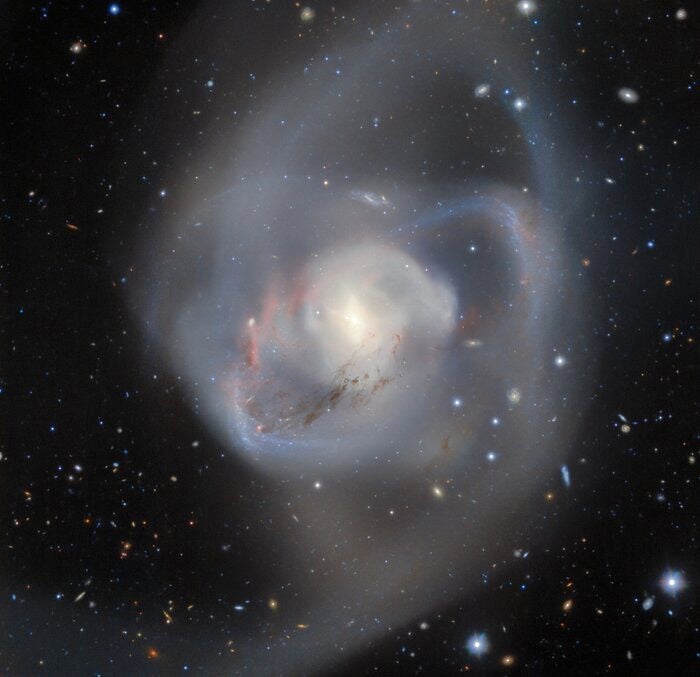
Lying 90 million light-years away in Aquarius, two galaxies in the midst of a cosmic merger were recently studied using the Gemini South Telescope in Chile. Astrophysicists captured streams of swirling gas and dust in NGC 7727, a peculiar galaxy containing two supermassive black holes separated by 1,600 light-years. The result is a mixture of active star-forming regions and clouds, intertwining the galaxy’s features into what looks like a hazy ball of cotton candy.
NGC 7727 is very unusual in that it’s essentially an ordinary barred spiral, save for the peculiarity of a binary black hole center. A 2021 study published in Astronomy & Astrophysics found that the supermassive black holes were the closest pair to Earth ever detected.
Transforming galaxies
Astronomers measured the masses of the two black holes by looking at how the gravitational pull around them disturbs the movement of stars near them. The more massive of the two weighs in at 154 million times the mass of the Sun, while the other measures 6.3 million solar masses. While the pair are currently 1,600 light years apart, the black holes are expected to merge within the next 250 million years. When they do, the merger will create a single black hole with a mass exceeding 160 million solar masses.
The galaxy’s unusual structure has a long history. The black holes have pulled together vast amounts of stars and dust, creating the knotted spiral arms we now see. One result is that the dust lanes bloom with newborn stars.
Ultimately, astronomers believe NGC 7727 will transform into an elliptical galaxy that contains old, reddish stars and hosts little star formation, unlike its former barred spiral self. The result is what astrophysicists suspect will happen to the Milky Way and Andromeda galaxies when they collide several billion years from now.









